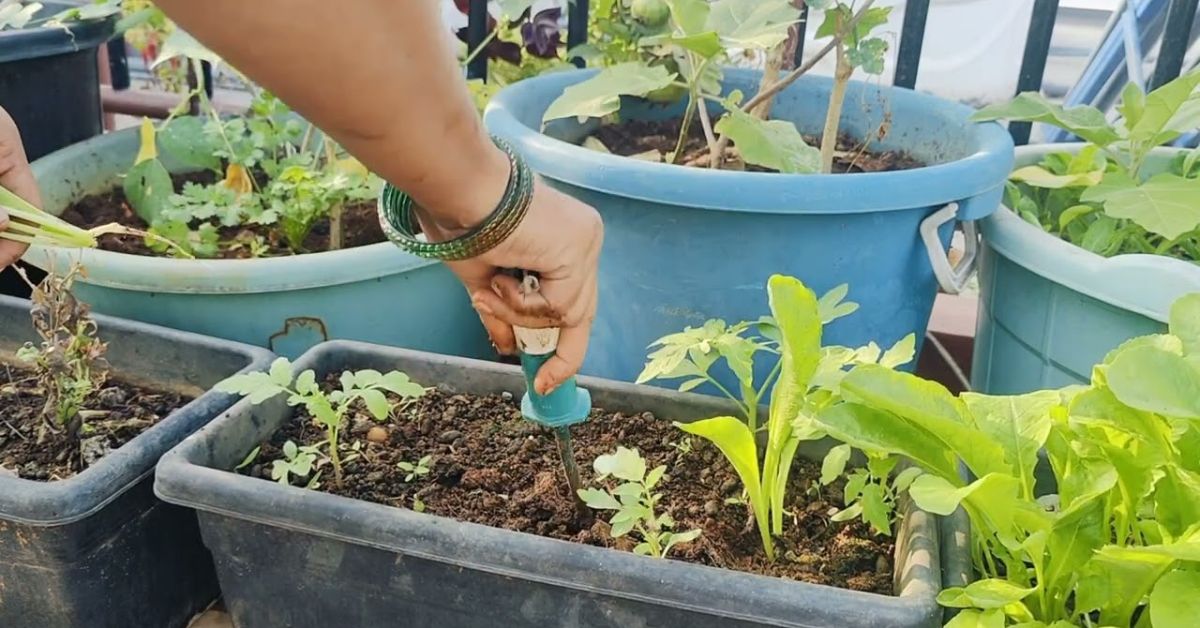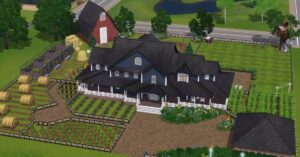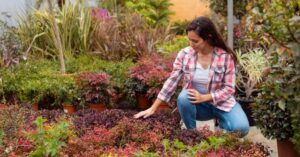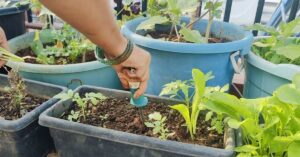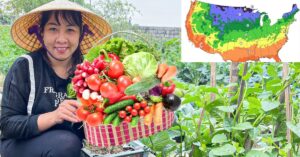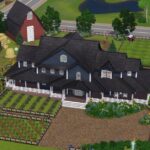Gardening zones tell what plants thrive in an area. The zone depends on the minimum winter temperature. Knowing the zone helps choose plants that last year to year. Zone maps show hardiness for where one lives and gardens.
Want to grow a garden but unsure what can survive winter where you live? Figuring out your zone is key to success. Your zone number reflects how cold it gets. This helps select flowers and veggies that will flourish outside rather than fade too soon.
Gardeners should determine their zone to know what to plant. the U.S. Department of Agriculture defines hardiness zones based on climate data. Each zone represents a 10°F temperature range. Choosing plants rated for one’s zone means they are suitable for that area’s winter lows and will come back reliably each spring.
Determine Hardiness Using Map Find Hardy Zone
The United States Department of Agriculture created planting hardiness zone maps. These maps divide North America into 13 zones based on average annual minimum winter temperatures. Each zone increases or decreases by 5 degrees Fahrenheit. By finding the zone for an area using these maps, gardeners know the typical lowest winter temperatures.
Zone maps are available online or from home and garden stores. Finding the zone is as easy as entering a zip code or looking up where it falls zone-wise. This gives a baseline for what perennials and woody plants can survive winter in an area before choosing what to grow.
Soil Temperature Matters Most Identifying Correct Growing Conditions
Soil temperature has a big influence on what will grow well or poorly in a certain area. The soil temperature affects the seed germination rate and plant growth. Warmer soil allows seeds to sprout and plants to become established earlier in spring. Cooler soil delays these processes which impacts whether crops mature before fall frost.
Paying attention to soil temperature aids in selecting vegetable varieties stated to perform best at the average temperatures in a location. This helps match plants to the suitable growing season length. Consider also how soil type impacts its ability to retain warmth or coolness.
Average Annual Minimum Temperature Key Factor Zone Designation
The average coldest temperature experienced annually where lows of 26°F or 27°F occur in a zone is the chief determinant of its designation number. Zone 8 is assigned to areas where the lowest average yearly temperature dips from 20°F to 25°F.Plants must be able to withstand brief drops to these minimal levels.
Locations above and below Zone 8 vary by 5 degrees, so a Zone 7 area’s yearly lowest average is 15°F to 20°F. The yearly lowest average of zone 9 is 25°F to 30°F. This key temperature makes the difference in what perennials and shrubs can endure winters in each zone.
Plantsability Depends On Temperature Range Vegetation Thrives Within
Whether plants can establish and bloom relies on being placed where the temperature stays within their preferred minimum and maximum limits for healthy growth. Perennials labeled for zones 5-9 need consistent nighttime lows of 20°F up to 45°F to flower yearly.
Annuals and vegetable seed packets list their thrive zone too. Tomato types state 55°F minimum soil temperature for germination while peppers need 60°F. Placing according to these temperature needs prevents disappointments from seasons too short or cold stress slowing production. Being informed of a plant’s desired temperature span aids in successful planting.
Microclimates Affect Where Plants Flourish Small Differences Matter

Slight variations in sun exposure, airflow, reflected heat and other microclimate factors in a yard make some spots better suited to certain plants over others. An area against a heat retaining wall will stay a couple of degrees warmer than an open spot.
Similarly, a low-lying section may collect colder air or a spot under trees stay cooler. Evaluating the different microclimates lets pairing plants to the minimally harshest or maximally beneficial section. This strategic placement can help broaden what thrives in an otherwise marginal general zone.
Shade Or Sun Exposure Alters What Will Grow Position Matters Too
The amount of direct sun a spot receives fundamentally changes its suitable plant list. Full sun plants need 6 or more hours of direct rays daily to flower and fruit well. Morning sun with afternoon shade-loving flowers handle 3-6 hours.
Part-shade perennials and ferns flourish in just 3 hours while shade plants want dense foliage protection. Proper placement spares sun-weak plants from wilting or shade haters from becoming leggy. Combining according to lighting needs gives year-round colorful interest.
Soil Type Influences Drainage Needs Consider Moisture Retention
Soil composition determines if it tends toward sogginess or dryness which translates to plant preferences. Loamy soil composed of sand, silt, and clay retains moisture well for most plants. But clay soils stay overly wet while sandy ones dry out fast.
Amending either with compost creates a richer medium but their natural tendencies still matter for selection. Plants liking constantly moist feet flourish in clay while others suited to well-drained areas do best in sand. Choosing types compatible with the native soil type optimizes healthy growth.
Precipitation Levels Impact Watering Needs More Rain Less Water
The typical yearly rainfall, its seasonal distribution, and soil drainage combine to affect watering needs. In wetter months, infrequent deep soakings may suffice but arid seasons demand frequent shallow waterings for lawns and beds.
Areas receiving scant rain under 15 inches annually need xeric plants evolved to use water thriftily and irrigation carefully managed. Where annual rainfall exceeds 30 inches, natural rainfall covers the needs of many plants except in prolonged dry spells. Matching plants to the precipitation pattern helps conserve water resources.
Elevation Affects Frost Dates Higher Up Colder Season Lasts
Higher elevations get frost and snow later in spring while experiencing earlier first frosts in fall compared to lower ground. For every 1000 feet above sea level, frost dates can be 1-2 weeks further apart on average.
Planting concerning these elevation-appropriate dates prevents early or late season freezes from damaging new growth. Hardier options suitable to a zone at mountainous elevations give reliable performance. Microclimates still require observation though for occasional exceptions.
Coastal Locations Have Milder Winters Near Ocean Moderate Zone
Being situated by large bodies of water like oceans, seas, and Great Lakes makes for milder year-round temperatures compared to inland zones. Coastal areas average 5-10°F warmer minimums so winter-tender varieties not otherwise hardy further inland may succeed there.
The ocean influence also results in less seasonally fluctuating minimums and more even rainfall distribution than continental climates. These climatic advantages let areas within plant zones expand what thrives via proximity to water ameliorating effects. It expands planting options.
Southern Exposure Warmer Northern Colder Facing Affects Risk
A yard’s orientation toward the sun affects plant hardiness. South facing slopes and walls receive maximum heat gaining 5-9°F above north exposures. Northern sides get the least sun remaining colder.
Microclimate changes from exposure make northern walls riskier for tender varieties in winter. However southern slopes suitable for one lower zone may grow varieties designated for a somewhat colder zone when placed on a northern slope. Facing zone matters due to solar aspect differences.
Online Tools Narrow Down Zone Using Address Enter Location Details

Websites like the National Arboretum’s Plant Hardiness Zone Map interface allow entering a street address linked with satellite imagery systems. This references the exact coordinates specifying the property’s authoritative growing zone.
They are entering city and state results too if an address is unknown. Location-aware applications deliver reliable zone assignments accounting for variations within a town. Plus they may list average temperature and rainfall data helping assess annual climate patterns and narrowing plant choices further. Precise zone finding aids virtual gardening plans.
FAQ’s
What gardening zone am I in?
Gardening zones are determined by climate conditions and help identify suitable plants for specific regions. Use online tools or consult local agricultural extension offices to find your gardening zone.
How do I determine my gardening zone?
Discover your gardening zone by entering your location on online USDA Hardiness Zone maps. These maps provide valuable information about the climate in your region, guiding your plant selection for successful gardening.
Why is knowing my gardening zone important?
Understanding your gardening zone is crucial for selecting plants that can thrive in your climate. It ensures optimal growth, increased chances of successful cultivation, and a more productive garden.
Can gardening zones change?
Gardening zones can shift due to factors like climate change, so it’s wise to periodically check for updates. Stay informed about any changes to adapt your plant choices accordingly and maintain a healthy garden.
Are there exceptions to gardening zones?
While gardening zones provide general guidelines, microclimates within specific areas may exist. Factors like elevation, proximity to water bodies, and urban heat islands can influence local conditions, so consider these nuances when planning your garden.
Conclusion
Understanding what zone best matches one’s location helps plant success when gardening. While general hardiness maps provide a starting point, fully appreciating unique microclimate variations and other climatic details allows for even better plant fits. With some observation of one’s yard over seasons, the micro-conditions influencing gardening become clearer.
By finding out what zone for gardening applies using easy online tools or reference publications, homeowners gain perspective on winter survivability requirements in their area. This zone designation information combined with noticing on-property climate nuances empowers selecting flowers, vegetables, and other greenery well-matched to truly thrive. For any gardener wondering What Zone Am I In For Gardening? pursuing this simple designation provides helpful guidance.
